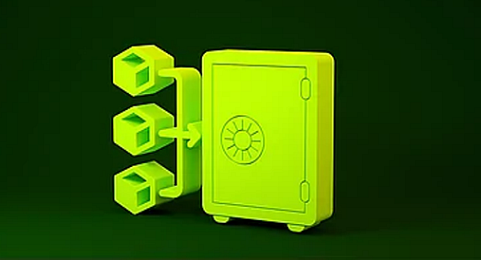Accredited InvestorsAltcoinAnatoli UnitskyAnti-Money Laundering (AML) In CryptoAPIArbitrageArtCoin TokenArticle DirectoryASICAuction Terminology GlossaryBasics of Stock Market InvestingBear MarketBest Crypto Payment Provider In the WorldBitcoinBlockchainBlockchain ConfirmationBlockchain Consensus MechanismBlockchain ForkBlockchain GlossaryBored Ape Yacht ClubBuild a Business That OutperformsBull MarketBuying SkyWay SharesByzantine Fault Tolerance (BFT) ExplainedCasascius CoinCentral Bank Digital Currency (CBDC)Centralized Crypto ExchangeCoinCoinsetCold WalletCollateralCommodity Futures Trading Commission (CFTC)Cross-Chain TechnologyCRUCrypto ExchangeCrypto GlossaryCrypto JokesCrypto Terms to KnowCrypto TickerCryptocurrencyCryptographyCryptojackingCryptounit BlockchainCryptounit GlossaryCryptounit ProgramdApp (Decentralized Application)Dead CoinDecentralized Exchange (DEX)Decentralized Finance (DeFi)Difference Between Bitcoin and EthereumDifferent Ways of Investing MoneyDigital CurrencyDistributed LedgerDo Your Own Research (DYOR)Dollar Cost Averaging (DCA)Dow Jones Industrial Average (DJIA)EncryptionERC-20ERC-721EthereumEvoScentFear Of Missing Out (FOMO)Fear, Uncertainty and Doubt (FUD)Fiat MoneyFNT Fintech CompanyGenesis BlockGlobal Unit PayGlossary of Banking TermsGlossary of Business TermsGlossary of Financial TermsHalvingHODLHot WalletHow Do I Start InvestingHow Rich is Satoshi Nakamoto?How to Create a BlockchainHow to Find Private InvestorsHow to Get Into FintechHow to Program Smart ContractsI Am Thrilled to Be a Part of This Global ProjectInitial Coin Offering (ICO)Initial Public Offering (IPO)Initial Token Offering (ITO)Innovation Basalt TechnologyInnovative Transportation TechnologiesInternational Bank Account Number (IBAN)Investing in Gold Mining StocksInvesting in Gold MiningJagerJoy of Missing Out (JOMO)Know Your Customer (KYC)LedgerLiquidity in CryptocurrencyMaker and Taker Fees in Crypto TradingMarket Capitalization (Market Cap)Meme CoinMetal Credit CardMetaMaskMillenials Now Have Access to Generational WealthMy Best Investment EverNew Digital EvolutionNFT GlossaryOff-Chain TransactionsOn-Chain TransactionsOpen Edition NFTPeer-to-Peer (P2P)Personal Loan GlossaryProbably the Best STO on the MarketProof of Stake (PoS)Real Estate Glossary of TermsReal Estate Investing GlossaryRebase TokenSecurities and Exchange Commission (SEC)Security Token ExchangesSecurity Token Offering (STO)Soulbound Decentralized Identities for Security TokensSoulbound ID Launch by Stobox Proves a SuccessSoulbound TokensStoboxStock Market GlossaryTestimonialsTether Platform and Token (USDT)UnitEx ExchangeUnitsky String TechnologiesUNTBUSDUValidatorWe Started Investing When We Were 25What are Blue Chip NFT?What are Blue Chip Stocks?What are Crypto Assets?What are Crypto Smart Contracts?What are CryptoPunks NFT?What are Digital Assets?What are Digital Collectibles?What are Gas Fees?What are Gas Wars?What are Hashmasks?What are Non Fungible Tokens?What are Non-Sufficient Funds (NSF)?What are Soulbound Tokens (SBT)?What are Stablecoins in Crypto?What are Transactions Per Second (TPS)?What are Utility NFTs?What are Utility Tokens?What Does Burning Crypto Mean?What Does Diamond Hands Mean?What Does Paper Hands Mean?What Does To The Moon Mean?What Does WAGMI Mean?What Happened to Satoshi Nakamoto?What is a 51% Attack?What is a Baby Boomer?What is a Backlink?What is a Banner?What is a Barcode?What is a Bid-Ask Spread in Crypto?What is a Block in Blockchain?What is a Block Reward?What is a Blockchain Address?What is a Blockchain Node?What is a Blockchain Oracle?What is a Blog?What is a Bond?What is a Bot?What is a Broker?What is a Business Accelerator?What is a Cash Cow?What is a Commercial Bank?What is a Commodity?What is a Con?What is a Credit?What is a Credit Limit?What is a Credit Rating?What is a Crypto Airdrop?What is a Crypto Bridge?What is a Crypto Scam?What is a Crypto Token?What is a Crypto Wallet?What is a Crypto Whale?What is a Crypto Winter?What is a Cryptocurrency Public Ledger?What is a Cryptocurrency Roadmap?What is a DAO?What is a Dark Pool?What is a Day Trader?What is a Dead Cat Bounce?What is a Default?What is a Derivative?What is a Digital Credit Card?What is a Fiscal Quarter?What is a Fungible Token?What is a Governance Token?What is a Grace Period?What is a Hard Fork?What is a Hot Wallet?What is a Hybrid Blockchain?What is a Hybrid PoW/PoS?What is a Joint Account?What is a Market Cap?What is a Merkle Tree in Blockchain?What is a Mining Farm?What is a Nonce? What is a PFP NFT?What is a POS System?What is a Prepaid Card?What is a Private Blockchain?What is a Private Key?What is a Public Blockchain?What is a Public Key?What is a Reserve Currency?What is a Ring Signature?What is a Routing Number?What is a Rug Pull in Crypto?What is a Safe Deposit Box?What is a Satoshi?What is a Security Token?What is a Seed Phrase?What is a Shitcoin?What is a Sidechain?What is a Soft Fork?What is a Spot Market?What is a State Bank?What is a SWIFT Code?What is a Tax Identification Number (TIN)?What is a Time Deposit?What is a Transaction Account?What is a Variable Interest Rate?What is a Virtual Assistant (VA)?What is a Virtual Card?What is a Virtual Currency?What is a Visa Card?What is a Whitelist in Crypto?What is a Whitepaper?What is Accounts Payable (AP)?What is AMA in Crypto?What is Amortization?What is an Accrual?What is an ACH Transfer?What is an Actuary?What is an Addendum?What is an Algorithm?What is an Angel Investor?What is an Annuity?What is an Asset?What is an ATM?What is an Atomic Swap?What is an Audit?What is an Avatar?What is an EIN?What is an Embargo?What is an Entrepreneur?What is an IDO (Initial Dex Offering)?What is an Interest Rate?What is an Internet cookie?What is an Investment Bank?What is an NFT Drop?What is an NFT Floor Price?What is an Ommer Block?What is an Orphan Block?What is an Outstanding Check?What is an Overdraft?What is Artificial Intelligence (AI)?What is B2B (Business-to-Business)?What is B2G (Business-to-Government)?What is Bartering?What is Bitcoin Dominance?What is Bitcoin Pizza Day?What is Blockchain Immutability?What is Blockchain Used For?What is BRICS?What is Business-to-Consumer (B2C)?What is C2C (Customer to Customer)?What is Capitalism?What is Catfishing?What is CFD Trading?What is Check Kiting?What is Cloud Mining?What is Communism?What is Content Marketing?What is Decentralization in Blockchain?What is DeFi in Crypto?What is Delisting?What is Depreciation?What is Digital Marketing?What is Diversification?What is Double Spending?What is Dumb Money?What is Dumping?What is Earnings Per Share (EPS)?What is Economics?What is Email Marketing?What is Equity?What is Etherscan?What is Fintech?What is Foreign currency?What is Forex?What is Fundamental Analysis (FA)?What is GameFi?What is Generative Art NFT?What is Gwei?What is Hard Currency?What is Hash Rate?What is Hashing in Blockchain?What is Inflation?What is Initial Game Offering (IGO)?What is Interest?What is Interest Income?What is Mainnet?What is Mastercard?What is Metaverse in Crypto?What is Mining in Cryptocurrency?What is Minting NFT?What is Mobile Banking?What is Money Laundering?What is NFT Alpha?What is NFT Metadata?What is NFT Rarity?What is NGMI Meaning?What is Nominal Interest Rate?What is Online Banking?What is Open-End Credit?What is OpenSea NFT Marketplace?What is Personal Identification Number (PIN)?What is Play-to-Earn?What is Polygon?What is Proof of Authority (PoA)?What is Proof of Work (PoW)?What is Public Key Cryptography?What is Pump and Dump?What is Quantum Computing?What is Refinancing?What is Retail Banking?What is Ripple?What is Sharding?What is Slippage in Crypto?What is Smart Money?What is Solvency?What is Soulbound ID?What is SSL?What is Staking in Cryptocurrency?What is Technical Analysis (TA)?What is Testnet?What is the Ask Price?What is the Better Business Bureau (BBB)?What is the Bid Price?What is the Dark Web?What is the InterPlanetary File System (IPFS)?What is the Gold Standard?What is the Lightning Network?What is the Prime Rate?What is the Sandbox?What is the Secondary Market?What is the World Bank?What is Tier 1 Capital?What is Tokenomics?What is TRC-20?What is Universal Banking?What is Unspent Transaction Output (UTXO)?What is Usury?What is Volatility in Crypto?What is Wash Trading?What is Web3?What is Whisper?What is XRP?What is Zero-Knowledge Proof (ZKP)?Who is Beeple?Who is Satoshi Nakamoto?Who is Vitalik Buterin?Why Tokenization is a Safe HavenWhy You Should Try Your Hand at Trading
What is Proof of Work (PoW)?
- Home
- Cryptounit Glossary
- What is Proof of Work (PoW)?
Proof of work (PoW) refers to a system that demands a considerable amount of effort to discourage malicious uses of computing power, such as sending spam emails or launching denial of service attacks.

What is Proof of Work in Blockchain?
PoW is a method of adding new blocks of transactions to the blockchain of a cryptocurrency. In this scenario, the work consists of creating a hash (a long string of characters) that matches the target hash for the current block. The crypto miner who does so gets the right to add that block to the blockchain and receive rewards.
Bitcoin was the first widely adopted application of Hal Finney's PoW concept after its release in 2009. Many other cryptocurrencies use proof of work to achieve secure, and decentralized consensus.
The word "work" is crucial in proof of work. To prevent anyone from gaming the system, the method requires miners to compete with one another to be the first to answer arbitrary mathematical puzzles. The winner is selected to add the newest batch of data or transactions to the blockchain. Winning miners receive their reward only when other network participants verify that the data being added to the chain is correct and valid.
How Does it Work
Users identify tampering using hashes, which are long strings of numbers that serve as proof of work. Put a particular set of data through a hash function, and it will only ever produce one hash. However, due to the "avalanche effect," even little changes to any piece of the original data will result in a completely incomprehensible hash.
The hash created by a given function will be the same length regardless of the size of the original data set. The hash is a one-way function that can only be used to verify that the data that created the hash matches the original data.
Since generating any hash for a set of bitcoin transactions would be too easy for modern computers, the bitcoin network sets a significant degree of "difficulty" in turning the process into "work". This parameter is set so that a new block is "mined" (added to the blockchain creating a valid hash) every 10 minutes.
Setting the difficulty is done by defining a "target" for the hash: the lower the target, the smaller the set of valid hashes and the more difficult it is to generate one. This results in a hash starting with a long line of zeros.
Proof of Work vs Proof of Stake
The first cryptocurrency consensus mechanism was proof of work. With the launch of Peercoin in 2012, an alternative, proof of stake, was introduced. It chooses transaction validators depending on the number of coins staked, or locked up, to the network.
Proof of stake is more scalable than proof of work since it does not require nearly as much processing power. Proof-of-stake cryptocurrencies are more ecologically friendly since they can execute transactions faster for lower fees and with less energy usage. It is also far easier to begin staking crypto than mining because no expensive hardware is necessary.
However, from a safety standpoint, proof of work is more proven. One potential concern with proof of stake is that parties with large holdings in cryptocurrencies may have too much power, which isn't an issue with proof of work.
Advantages and Disadvantages of Proof of Work
Proof of work may provide a higher level of security than other methods, with bitcoin currently operating for more than a decade without a significant outage or hack.
However, while proof of work provides ideal security and decentralization, it contains a significant problem: it consumes a significant amount of energy.
According to bitcoin fans, such wasted energy consumption is a justifiable price to pay for the one consensus mechanism that has truly proven robust at scale. For those who are still suspicious of cryptocurrency, this is practically an ecological disaster.
Biggest advantages:
- Provides a decentralized way of transaction verification.
- High level of security.
- Miners can earn cryptocurrency rewards.
Biggest disadvantages:
- High energy consumption.
- Inefficient, with slow transaction speeds and substantial fees.
- Mining necessitates the use of costly equipment.
Bottom line
Proof of work is the most popular of the two main consensus algorithms for validating blockchain transactions. While not without limitations, proof of work miners help ensure that only legal transactions are stored on the blockchain.
PoW was the preferred consensus mechanism for early cryptocurrencies that required a safe, decentralized method of processing transactions. Although proof of stake has recently evolved as a less energy-intensive alternative, many coins continue to employ proof of work.
Related Articles

Proof of Stake (PoS)
The Proof of Stake (PoS) system was created as an alternative to Proof of Work (PoW). Miners on PoW-based blockchains, such as Bitcoin, can only be rewarded if they find a valid solution to a...

What is a Block Reward?
For example, in the case of Bitcoin, the original block reward was 50 bitcoins and it is halved approximately every 210,000 blocks. This means that over time, the number of bitcoins awarded for...

What is Mining in Cryptocurrency?
Mining is essential on Proof of Work (PoW) blockchains such as Bitcoin's. Newer blockchains typically employ Proof of Stake (PoS) and other consensus algorithms, and they do not require or permit mining.

What is Proof of Authority (PoA)?
The cryptocurrency industry has undergone significant evolution since the first blockchain transaction on the Bitcoin network. In addition to well-established consensus algorithms like Proof of Work and...
- Home
- Cryptounit Glossary
- What is Proof of Work (PoW)?